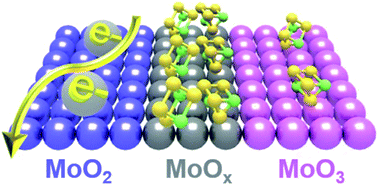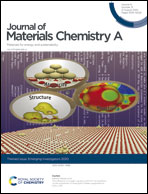A MoO3/MoO2-CP self-supporting heterostructure for modification of lithium–sulfur batteries†
Abstract
Heterostructures have attracted extensive attention because of their unique structure and multiple functions, showing potential for various energy storage and conversion techniques. Here, inspired by the potential advantages of heterostructures, we design an insulating MoO3/conducting MoO2 heterostructure as a host for lithium octasulfide (Li2S8) for lithium–sulfur batteries. Different from other heterostructures with a sharp interface, the transition state of MoOx is proved to have a large atomic ratio (∼18%). Benefiting from the good conductivity of MoO2 and the strong polarity of MoOx to adsorb LiPS, the initial specific capacity of the MoO3/MoO2-CP-Li2S8 cathode is 898.4 mA h g−1 and drops to 828.1 mA h g−1 after 500 cycles at 0.5C, showing a 92.2% retention of the initial capacity. Meanwhile, it can deliver an initial specific capacity of 580.5 mA h g−1 at 2.5C with a capacity retention of 82.8% after 850 cycles. This work shows that the heterostructures of 2D materials are promising as a Li2S8 host because of their multiple functions and may provide new strategies to design electrochemical electrodes.

- This article is part of the themed collections: Journal of Materials Chemistry A Emerging Investigators and Journal of Materials Chemistry A Lunar New Year collection 2021


 Please wait while we load your content...
Please wait while we load your content...